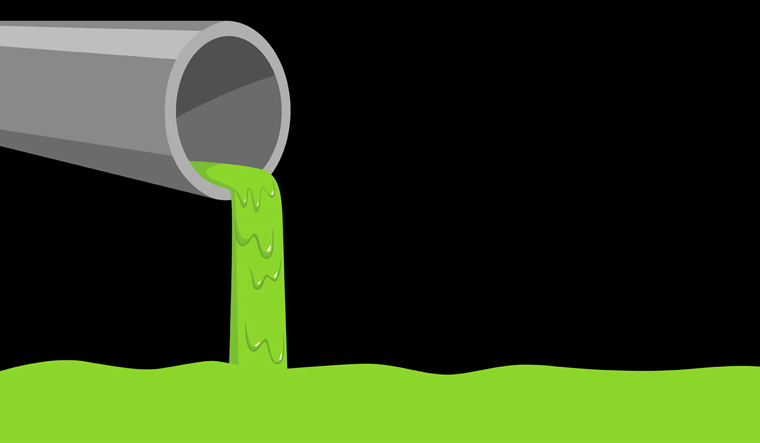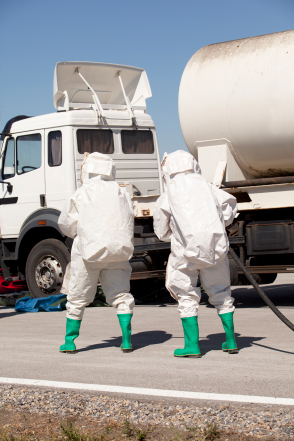Specialist Liquid Waste Removal Melbourne: Maintaining Your Setting Tidy
Specialist Liquid Waste Removal Melbourne: Maintaining Your Setting Tidy
Blog Article
Just How Liquid Waste Disposal Functions: A Comprehensive Overview of Techniques and Technologies Employed

Review of Fluid Waste Types
The intricacy of fluid waste types demands a comprehensive understanding of their attributes and effects for disposal. Liquid waste can broadly be categorized into several kinds, consisting of industrial, community, farming, and contaminated materials. Each group shows distinctive residential properties, requiring certain management approaches to alleviate environmental and wellness risks.
Industrial fluid waste stems from producing procedures and frequently includes a range of pollutants, such as heavy metals, solvents, and organic compounds. Municipal fluid waste, largely consisting of wastewater from homes and industrial establishments, has natural matter, nutrients, and microorganisms (industrial wastewater treatment). Agricultural liquid waste, consisting of runoff from farms, might contain fertilizers, pesticides, and animal waste, positioning dangers to water high quality and environments
Hazardous liquid waste is defined by its toxicity, sensitivity, or potential to create injury. This category includes materials like acids, bases, and certain chemicals that require stringent handling and disposal methods. Recognizing these diverse fluid waste types is important for creating efficient disposal methods and making sure conformity with environmental guidelines. Appropriate classification and characterization are vital for applying suitable treatment techniques and lessening the damaging influence on public health and wellness and the atmosphere.
Physical Treatment Techniques

Testing is the initial action, where larger particles and debris are eliminated from the fluid waste utilizing displays or grates. In sedimentation storage tanks, much heavier particles resolve at the base, forming a sludge layer, while the cleared up liquid can be more dealt with.
Filtration is one more necessary technique that involves passing the fluid via porous materials, such as sand or membranes, to catch smaller particles. This step enhances the high quality of the fluid, making it appropriate for succeeding therapy procedures.

Chemical Treatment Methods
Chemical therapy strategies are vital for effectively taking care of liquid waste, specifically in dealing with liquified and colloidal contaminants that physical approaches may not effectively get rid of. These strategies make use of numerous chemical representatives to counteract, speed up, or change unsafe materials into much less harmful types.
One usual method is coagulation and flocculation, where chemicals such as alum or ferric chloride are contributed to promote the aggregation of suspended bits. This process enhances sedimentation, enabling easier elimination of the resulting sludge. In addition, oxidation procedures, utilizing agents like chlorine or ozone, are employed to break down intricate natural substances and microorganisms, making the waste much safer for discharge or further treatment.
Neutralization is another critical technique, which readjusts the pH of acidic or alkaline waste streams to neutral degrees, avoiding prospective harm to downstream systems and the setting. In addition, progressed oxidation processes (AOPs) utilize mixes of oxidants and ultraviolet light to break down persistent contaminants, accomplishing a higher degree of therapy effectiveness.
Biological Therapy Procedures
Biological therapy procedures play a vital function in the management of fluid waste by using microorganisms to decompose raw material and decrease pollutant levels. These procedures can be broadly categorized right into anaerobic and cardio therapies, each employing specific microbial communities to attain reliable waste destruction.
Cardio therapy involves the usage of oxygen to help with the failure of organic materials by bacteria. This process is generally implemented in turned on sludge systems, where oygenation containers provide a helpful environment for microbial development, resulting in the oxidation of organic contaminants. The resultant biomass can be divided from treated effluent through sedimentation.
On the other hand, anaerobic therapy happens in the lack of oxygen, depending on different microorganisms to damage down organic issue. This method is especially advantageous for high-strength waste, as it produces biogas, a renewable resource source, while minimizing sludge manufacturing. Technologies such as anaerobic digesters are frequently employed in local and commercial applications.
Both cardiovascular and anaerobic organic treatments not only reduce the ecological influence of fluid waste but also assist in source recuperation, making them necessary parts of lasting waste management techniques. Their versatility, performance, and performance sustain their extensive application across different industries.
Emerging Technologies in Disposal
Ingenious strategies to liquid waste disposal are swiftly advancing, driven by developments in innovation and an increasing emphasis on sustainability. Among these arising innovations, membrane bioreactors (MBRs) have gotten grip for their ability to combine biological therapy with membrane layer filtering, resulting in top quality effluent that can be recycled in numerous applications. MBRs enable smaller footprints and a lot more reliable procedures contrasted to typical systems.
An additional encouraging development is making use of anaerobic digestion incorporated with nutrient healing technologies, which not just deals with fluid waste however also creates biogas and find here recuperates valuable nutrients like nitrogen and phosphorus. This dual benefit enhances resource efficiency and reduces environmental influence.
Additionally, progressed oxidation processes (AOPs) are being taken on for the deterioration you can try these out of complex natural pollutants. These techniques use effective oxidants and catalysts to damage down contaminants at the molecular degree, supplying an extremely efficient option for challenging waste streams.
Additionally, the integration of expert system and artificial intelligence in waste administration systems is maximizing operational effectiveness and anticipating maintenance, leading to reduced expenses and boosted environmental compliance. These modern technologies reflect a substantial change towards more effective and lasting liquid garbage disposal practices.
Conclusion
Finally, reliable liquid garbage disposal necessitates a thorough understanding of various techniques and innovations. The assimilation of physical, chemical, and organic therapy techniques ensures the effective monitoring of varied waste kinds. Furthermore, the introduction of innovative innovations boosts therapy efficiency and promotes sustainability in waste monitoring practices. By continually advancing these approaches, it ends up see this site being possible to deal with the growing obstacles associated with fluid waste, ultimately contributing to ecological defense and source recuperation.
Liquid waste disposal is a vital element of environmental monitoring, calling for a detailed understanding of different techniques and technologies customized to different waste types. Fluid waste can extensively be classified right into a number of kinds, consisting of commercial, local, agricultural, and hazardous waste. Agricultural liquid waste, consisting of overflow from farms, might include fertilizers, chemicals, and animal waste, posing threats to water high quality and environments.
Different physical treatment techniques play a vital role in taking care of liquid waste efficiently - industrial wastewater treatment.In conclusion, effective fluid waste disposal necessitates a detailed understanding of various strategies and technologies
Report this page